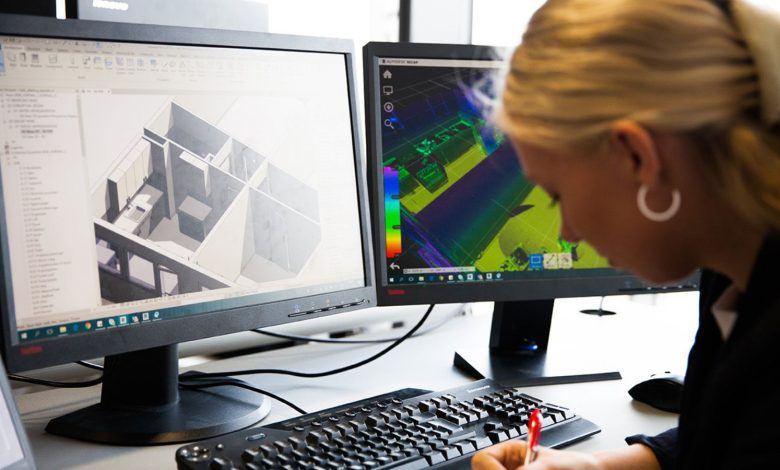
What Are The Most Effective Monitors For Students?
The Most Effective Monitors For Students?
One of the most important things to stay focused on when studying is your monitor. Students will often go through many monitors in a year just because they aren’t the best for their needs. In this article, we’ll find out about some of the best monitors for students! We will be going over the features of each monitor, as well as covering some great deals on Amazon!
Want to know more? Read our full guide about the best monitors for education.
The Best Monitors for Students: 2022-2023 Reviews and Buyer’s Guide Now that you’ve read our thoughts on a few of the best options out there, it’s time to take a look at what you can expect from each one. In this article, we’ll discuss all of the main features that make these monitors great choices for students.
We’ll be discussing things like screen size, resolution, ports, and other important considerations when it comes to buying these monitors! Don’t forget to check out our list of the 10 Best Monitors for Education
Which Monitors Work Best On Your Laptop
When you’re trying to choose a laptop monitor for students, there are a few things to consider. The size of the screen, the resolution, and how portable the monitor is all play a role in what will be the best choice for your needs.
Below are four of the best monitors for students that you can buy today.
1. A 15-inch laptop monitor is great for students because it’s small enough to fit on most desks, but still has a high resolution that makes texts and images look clear. Some great options with this size include the Dell U2515H and HP 15-ay011nr.
2. A 17-inch laptop monitor is perfect for larger spaces or where multiple people need to be able to see the screen at the same time. Some great options with this size include the Samsung C17F391EB and Acer Predator G19AQL-571P19UA.
3. If portability is a top priority, then a 24-inch monitor is the way to go. These monitors are big enough to fit on most desks, but still have a low resolution that makes them less expensive and easier to transport. Some great options with this size include the Dell U2414H and HP Pavilion 24-f002wm.
4. With a 27-inch monitor you get a bigger screen that is easier on the eyes when it comes to visual design but still fits well on smaller desks. Some great options with this size include the Samsung S27D750DS, Asus PB277Q, and Acer Predator XB271HU.
5. A 30-inch monitor is ideal for those who need desktop space while still wanting to see a large screen at their desk. Some great options with this size include the Acer Aspire R7-372, HP ZR30W, and Asus PB328Q.
6. For those in need of an ultra-high resolution, 3440 x1440 is the next step up with a pixel density of 109 pixels per inch. This is great for those who need to be able to work with detail or multiple windows. Some great options with this size include the Acer Predator X34, Asus ROG Swift PG348Q, and HP ZR34W.
7. A huge monitor like 40-inches or bigger can be overwhelming at first but we would recommend checking out an expert’s opinion on a good panel technology and how it will impact your work before purchasing a big panel.
With that said, most people prefer 3440×1440 resolution (or higher) over 1080p due to the fact that the pixel density is much higher and there are more pixels to look at thus creating a better experience for the eyes.
4k is great for those who want to do away with any blurring on a very big panel, especially if you are doing any editing or rendering. 4k is also great for gaming as everything looks crystal clear and the detail is unmatched by 1080p monitors so it’s an investment worth making.
A few of our friends have gone this route and are happy with their units, including the ASUS PB287Q and BenQ XL2730Z.
Relevant Read: Pegasystems PEGAPCSSA86V1 Study Guide
Which Monitors Work Best On Your Smartphone
The best monitors for students are the ones that have adjustable height and width, a built-in speaker, and a battery that lasts for at least six hours. Some of the best monitors for students are the Samsung Galaxy Tab S2 9.7-Inch Tablet with Active Pen, the Acer Predator Cestus 330 Gaming Laptop, and the Dell Inspiron 15 7000 Gaming Laptop.

Which Monitors Work Best On Your Desktop
There are a lot of great monitors available for students these days. It can be hard to decide which one to buy, but by following these tips, you’ll be able to choose the best monitor for your needs.
First, think about what you need the monitor for. If you’re mainly using it for schoolwork, a standard monitor will work just fine. However, if you want to use it for gaming or watching movies, you’ll need a more powerful monitor.
Next, consider your budget. Just because a monitor is expensive doesn’t mean it’s the best option. There are a ton of great monitors available that range in price from $30 to $1,000.
Finally, decide what kind of display you need. There are three types of displays available on monitors: CRT (cathode ray tube), LCD (liquid crystal display), and IPS (in-plane switching). CRT displays are the oldest type of display and are usually found in older monitors.
They tend to be less expensive than other types of displays but have some disadvantages, including a longer lifespan and a lower resolution. LCD displays are the most common type of display and are
What Are The Features You Should Look For In A Monitor?
There are a lot of different monitor types and features available on the market these days, so it can be hard to decide which one to buy for your student. In this blog post, we’ll discuss some of the key features to look for when selecting a monitor for students.
First and foremost, you need to decide what type of monitor your student will be using. There are two main types of monitors used by students: desktop monitors and laptop monitors. Desktop monitors are larger and typically used in traditional classrooms while laptop monitors are smaller and are more commonly used in schools today.
You should also consider what type of display your student needs. Monitors come in several different resolutions, including standard 1080p, 1440p, and 4K. Additionally, there are a variety of ports available on monitors, including DVI-I, DisplayPort 1.2, HDMI 2.0a, and USB-C.
Now that you have decided on the type of monitor your student will use and the resolution they need, you should start looking at the features that are important to them. Some of the key features to look for include: response time (how quickly the monitor responds to changes), and color accuracy (how closely the colors.
Conclusion
When it comes to choosing the best monitors for students, there are a few things to keep in mind. First and foremost, make sure you get a monitor that is comfortable for you to use. Second, consider your needs when it comes to color accuracy, brightness levels, and response time. And finally, be sure to read reviews before purchasing a monitor so that you can find the perfect one for your needs.



